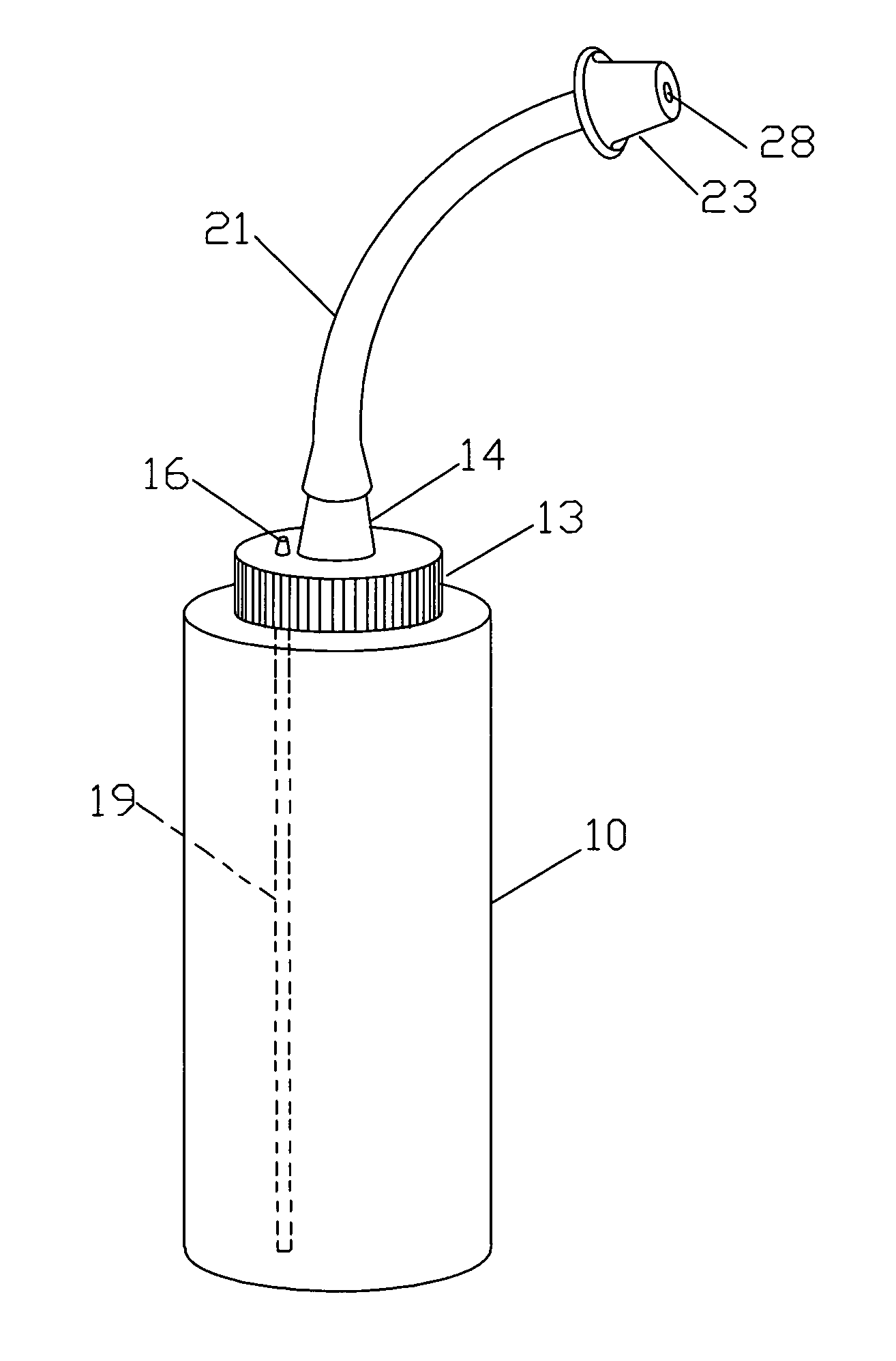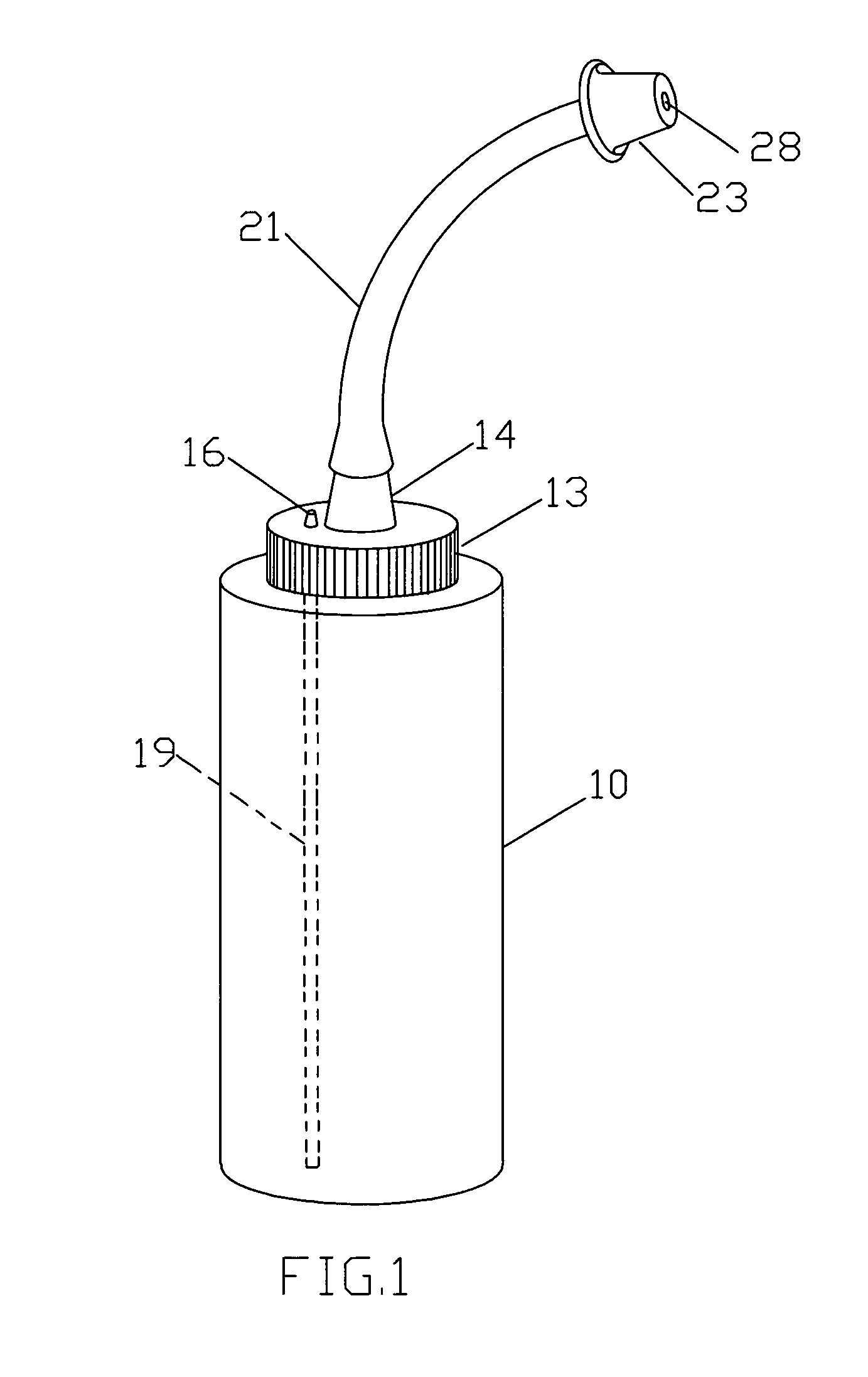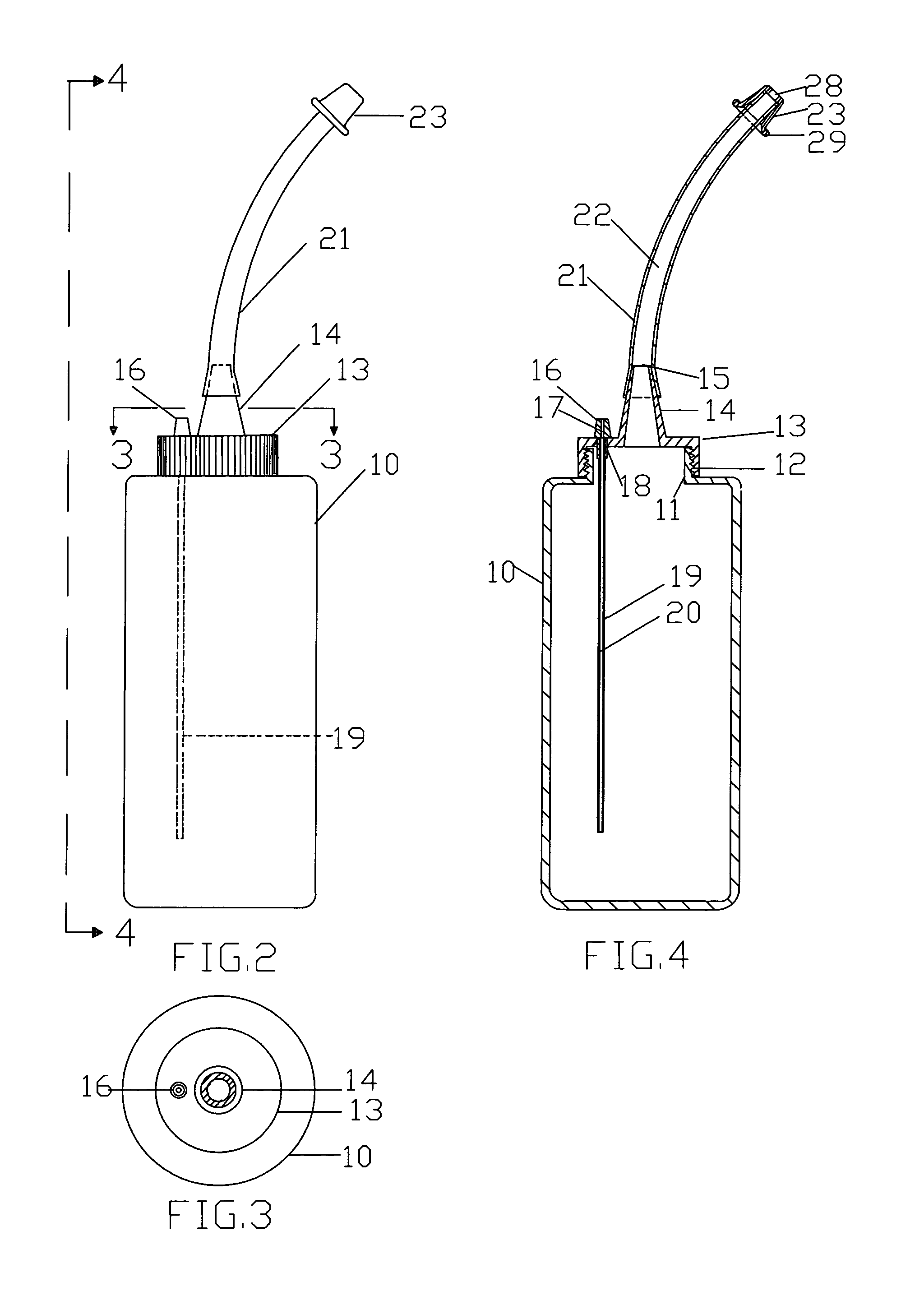Apparatus and method for nasal passage rinse
a technology of nasal passages and apparatus, which is applied in the direction of packaging, other medical devices, liquid flow controllers, etc., can solve the problems of unsuitable use, crude nasal rinsing equipment, and uncomfortable use of the applicator for the user, and achieve the effect of convenient portability during travel
- Summary
- Abstract
- Description
- Claims
- Application Information
AI Technical Summary
Benefits of technology
Problems solved by technology
Method used
Image
Examples
Embodiment Construction
[0036]FIG. 1 shows an apparatus for using saline solution to rinse nasal passages. The apparatus includes a container 10, a cap 13 having a hollow nozzle 14 and a fitting 16 for attaching a thin tubular conduit 19 to the cap 13. The tip of the hollow nozzle 14 is inserted into one end of a flexible tube 21. The other end of the tube 21 is inserted into a hollow contoured dispenser tip 23 which has a central opening 28. The fitting 16, which is inserted into a small hole in the cap 13, attaches the thin tubular conduit 19. The thin tubular conduit 19 extends into the container 10 close to its bottom. The cap 13 can be removed from the container 10 by rotating the cap 13 counter clockwise to allow the container 10 to be filled with saline solution.
[0037]Referring to FIG. 2 through FIG. 8, the apparatus will be described in greater detail. The container 10, can be constructed from any nontoxic materials, has cylindrical shape and is provided with a top opening with a neck 11 that can i...
PUM
 Login to View More
Login to View More Abstract
Description
Claims
Application Information
 Login to View More
Login to View More - R&D
- Intellectual Property
- Life Sciences
- Materials
- Tech Scout
- Unparalleled Data Quality
- Higher Quality Content
- 60% Fewer Hallucinations
Browse by: Latest US Patents, China's latest patents, Technical Efficacy Thesaurus, Application Domain, Technology Topic, Popular Technical Reports.
© 2025 PatSnap. All rights reserved.Legal|Privacy policy|Modern Slavery Act Transparency Statement|Sitemap|About US| Contact US: help@patsnap.com



